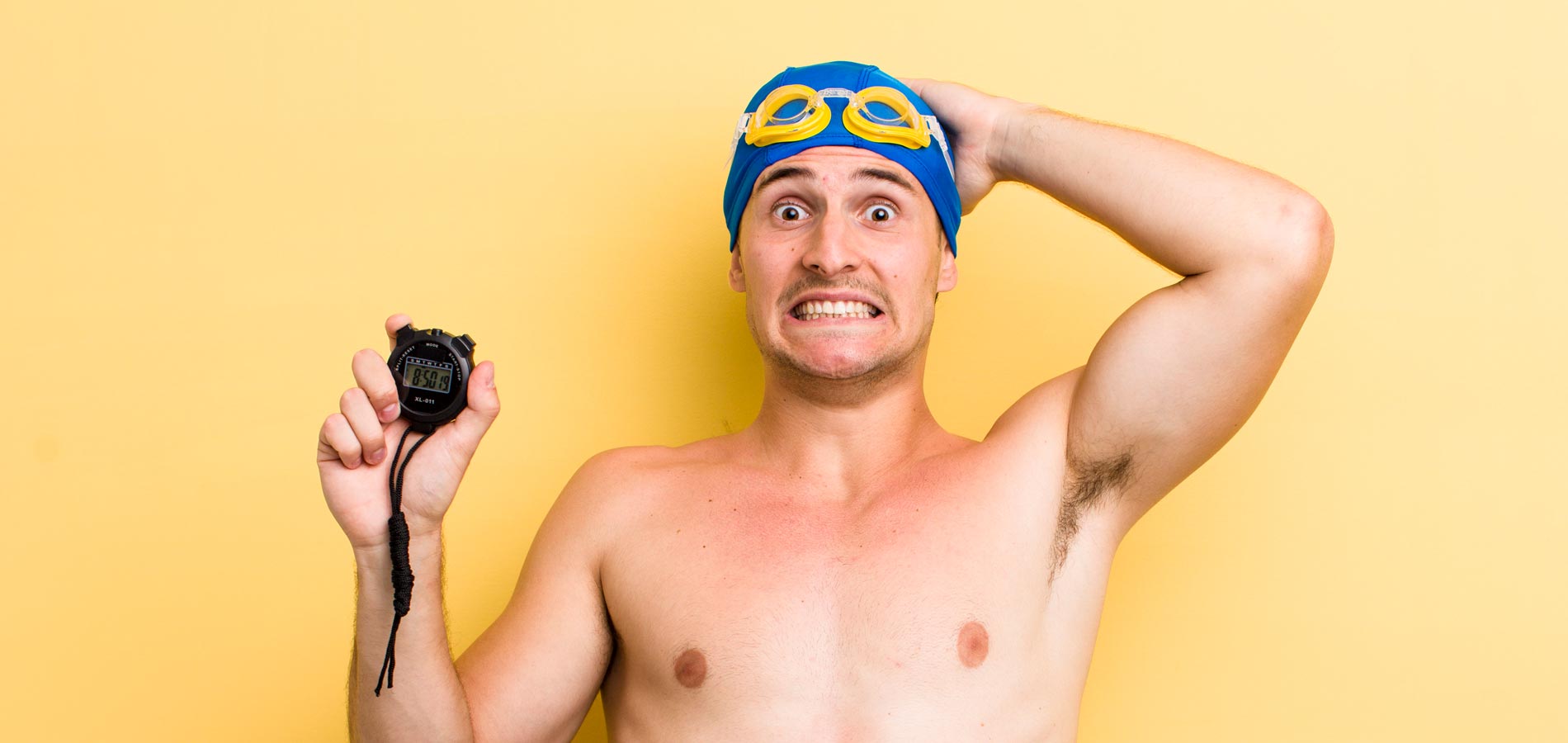In swimming, as in everything, there are rules that improve your technique and protect against injuries. By following them, you will improve your performance as a swimmer and get maximum pleasure from being in the pool.

Mistake #1: You hold your breath.
When we first learned to swim, many of us were taught to take a deep breath, hold our breath, and put our faces in the water. But when you do that, you burn oxygen for energy. Think about it, if you're running a 5km distance, are you going to hold your breath and run? No, because it deprives the muscles of the oxygen they need.
How to fix it: Practice on dry land first. Take a deep breath in through your mouth and start slowly exhaling through your nose. If you hum when you breathe through your nose, it will help you keep the right pace, you have to do it slowly, take your time.
Next step: breathing in water. After you inhale and face the water, work on exhaling slowly, again through your nose, and then lift your face out of the water when you feel the need.
Mistake #2: You stick your head out of the water to breathe.
We know it sounds illogical. How are you actually supposed to breathe if you don't lift your head out of the water? Let's clarify: it's more about keeping your head in the water with your face up. If you stick your whole head out every time you need to inhale, you're throwing your body out of alignment.
This often involves sinking your hips into the water, making your straight stroke more zig-zag.
How to fix it: Focus on keeping your head down and your chin almost pressed against your neck. When it's time to breathe, inhale in the same direction as the hand that came out of the water while keeping your head in the water (imagine turning your head so that only your mouth is open for air, but that's it).
Mistake #3: You allow your hips to sag.
This creates more water resistance. And more water resistance eventually slows you down. The goal is to stay level and float above the water, not fall into it. All too often, beginners default to movements that force their hips to drop, such as letting their legs drop when they should only be slightly below the surface of the water. Thus, the body works even harder to get from point A to point B.
How to fix it: Try swimming with a snorkel (or grab one you used on your sea adventures).
The tube allows you not to focus on breathing to the sides. Instead, you can focus on keeping your arms extended through the water, your breath coming out at an even pace, and your hips as high as possible. Try using the tube a few times a week to hone your form before worrying about more advanced work like increasing tempo and speed drills.
Mistake #4: You keep your hips straight.
Another common problem with hips is that they don't turn. Many swimmers rely on their upper body or only their legs to propel themselves through the water. But most of your power comes from your hips because they control both your upper and lower body, so depriving yourself of this movement will slow your momentum.
How to fix it. Use your core muscles, this will rotate your torso and help propel you faster through the water.
Mistake #5: You tighten your toes as if you were curling them into a fist.
This is a common mistake. After all, the lower legs and feet should be relaxed; the feet are turned with the toes slightly inward and continuously foam the water behind the swimmer. Legs perform movements from the hip.
There are still many mistakes that are barely noticeable to a beginner swimmer that actually prevent you from enjoying swimming. But an experienced coach will help you correct all the mistakes, make your swimming technique perfect, and you will be able to train without any extra effort!